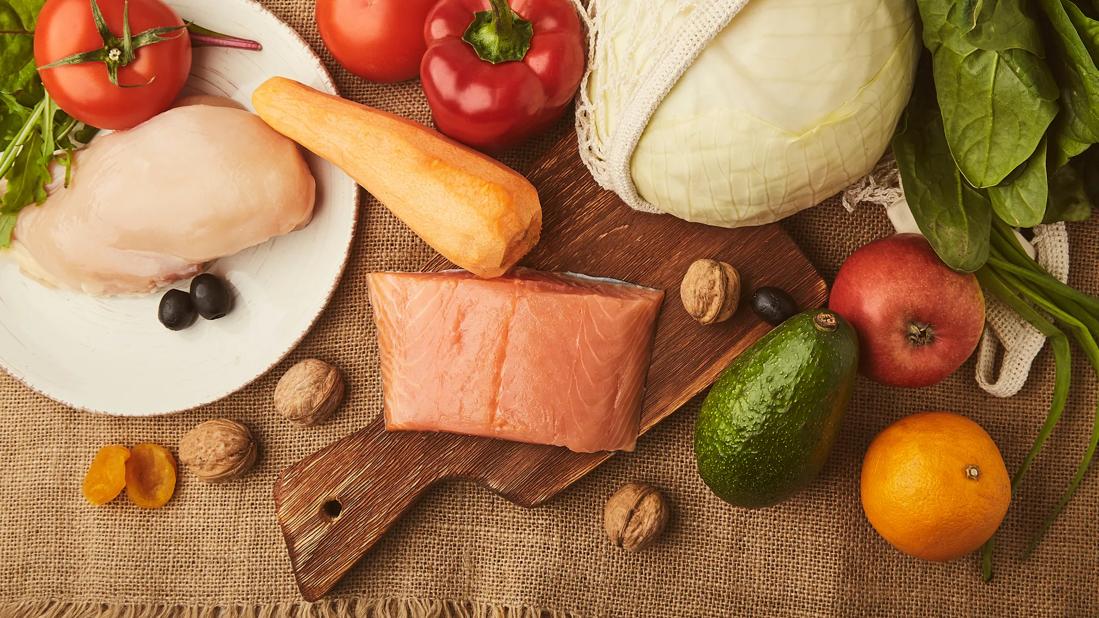Opt for low-FODMAP foods, like grapes, carrots and soy milk, that are easy to digest and help create a balanced gut

All of us have bacteria in our gut, but most of it is located in our large intestine. Small intestinal bacterial overgrowth (SIBO) happens when there’s a disruption to the normal amount of bacteria found in your small intestine.
Advertisement
Cleveland Clinic is a non-profit academic medical center. Advertising on our site helps support our mission. We do not endorse non-Cleveland Clinic products or services. Policy
Research suggests that SIBO may play a significant underlying factor in irritable bowel syndrome (IBS).
So, could following a SIBO diet and changing what you eat help manage symptoms?
It can help and may be one of many things your healthcare provider suggests, in addition to antibiotics or other complementary therapies.
If you have SIBO, you want to limit or avoid foods that may increase the amount of bacteria in your small intestine. An increase in bacteria can lead to symptoms like bloating and abdominal discomfort, says functional medicine specialist Melissa Young, MD.
The goal is to make sure you’re eating the right combination of foods that supply the nutrients your body can absorb. Doing so can help starve excess bacteria and create a balanced gut.
“Bacteria primarily consume carbohydrates, which results in the production of gases,” explains Dr. Young. “Recommended diet plans aim to decrease certain groups of carbs to both reduce the bacteria and the gas they produce.”
While there isn’t an official “SIBO diet,” your healthcare provider may recommend an eating plan like the following.
“FODMAP” stands for fermentable oligosaccharides, disaccharides, monosaccharides and polyols. FODMAPs are foods that you may have trouble digesting when you have SIBO.
Advertisement
A low-FODMAP diet focuses on limiting or eliminating high-FODMAP foods, like beans, lentils and wheat-based snacks. The idea is that avoiding high-FODMAP foods may slow bacterial overgrowth that happens when bacteria feed on these types of foods.
Instead, you want to fill your plate with low-FODMAP foods, like proteins, vegetables, fruit, grains and dairy, as well as nuts and seeds, that are less likely to trigger a bacterial growth spurt.
Some foods that are considered low-FODMAP include:
“After the initial elimination phase of about three to four weeks while you’re being treated for SIBO, you’ll then slowly reintroduce food from one high-FODMAP group at a time,” says Dr. Young.
Following a low-FODMAP diet long term isn’t recommended, as many of these highly fermentable foods feed your gut microbiome.
You may want to consider the elemental diet for SIBO, especially if you and your healthcare provider choose not to use antibiotics or other complementary therapies, like a course of herbal therapy recommended by your provider. This purely liquid diet comes in powder or liquid form. You’ll stay on the diet for about two to three weeks if you’re being treated for SIBO. Dr. Young says it’s an effective treatment option for SIBO.
The formula is easy to digest and contains essential nutrients your body needs in a “predigested” form containing amino acids, fatty acids, vitamins and minerals.
“With the elemental diet, the dietary building blocks and nutrients are more easily digestible and absorbed sooner in the digestive tract, so it’s much less likely to make it to the bacterial source in your small intestine,” she explains.
Research shows the elemental diet works. But it only works if you stay with it. That can be a challenge for reasons ranging from the way the formula tastes to being hungry, bored or frustrated because you can’t participate in family or social events that center around food.
Working with a registered dietitian or health coach while following the elemental diet can be helpful.
If you have SIBO, you may want to consider reducing or avoiding the following high-FODMAP foods:
Making changes to what you eat to improve SIBO symptoms takes collaboration between you and your healthcare team. At least 50% of people may experience recurring SIBO.
Advertisement
One of the more intimidating aspects of dealing with SIBO is the thought that some foods will always be on the no-go list. But Dr. Young notes that food plans to manage SIBO aren’t black-and-white — and what you eat and what you need to limit or avoid can be personalized for you.
“After treatment, if you’re feeling better, you can start to reincorporate the FODMAP foods into your diet. They’re often better tolerated,” she adds.
“That being said, you may find certain foods will always trigger your symptoms. Those are the ones you may need to continue to avoid or reduce how much of the specific foods you eat. If you’re still having bloating after eating certain foods, working with a dietitian can help.”
Advertisement
Learn more about our editorial process.
Advertisement

Dairy, wheat, seafood, nuts and other foods may trigger inflammation

People with an inflamed esophagus may also have other conditions that cause a nagging, persistent cough

Your body naturally produces the protein that’s essential for breaking down and digesting food

Nausea, fullness, heartburn and unexplained weight loss may signal that something is going on with your GI system

Choose foods that are low in fiber and easy to chew and swallow

What, when and how much you eat are just a few factors that can impact nighttime gas levels

The inability to burp can cause farting, stomach pain and nausea

It’s not an enema or bowel prep, and this colonic hydrotherapy can harm proper colon function

Start having sex about 72 hours before ovulation, then at least every other day during your fertile window

Attachment theory suggests that your earliest relationships shape connections throughout your life

It isn’t a recognized mental health disorder, but research shows that problematic social media use can negatively affect your mental health, self-esteem and sleep